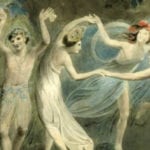 Miscellaneous
Miscellaneous  Miscellaneous
Miscellaneous  Gaming
Gaming 10 Funny Tutorials in Games
 History
History 10 Fascinating Little-Known Events in Mexican History
 Facts
Facts 10 Things You May Not Know about the Statue of Liberty
 Movies and TV
Movies and TV 10 Movie Adaptions That Brought Popular Songs to Life
 Health
Health 10 Miraculous Advances Toward Curing Incurable Diseases
 Miscellaneous
Miscellaneous 10 Undeniable Signs That People’s Views of Mushrooms Are Changing
 Animals
Animals 10 Strange Attempts to Smuggle Animals
 Travel
Travel 10 Natural Rock Formations That Will Make You Do a Double Take
 Movies and TV
Movies and TV 10 Actors Hidden in Your Favorite Movies
 Miscellaneous
Miscellaneous 10 Interesting Things Manufacturers Stopped Making and Why
 Gaming
Gaming 10 Funny Tutorials in Games
 History
History 10 Fascinating Little-Known Events in Mexican History
Who's Behind Listverse?

Jamie Frater
Head Editor
Jamie founded Listverse due to an insatiable desire to share fascinating, obscure, and bizarre facts. He has been a guest speaker on numerous national radio and television stations and is a five time published author.
More About Us Facts
Facts 10 Things You May Not Know about the Statue of Liberty
 Movies and TV
Movies and TV 10 Movie Adaptions That Brought Popular Songs to Life
 Health
Health 10 Miraculous Advances Toward Curing Incurable Diseases
 Miscellaneous
Miscellaneous 10 Undeniable Signs That People’s Views of Mushrooms Are Changing
 Animals
Animals 10 Strange Attempts to Smuggle Animals
 Travel
Travel 10 Natural Rock Formations That Will Make You Do a Double Take
 Movies and TV
Movies and TV 10 Actors Hidden in Your Favorite Movies
10 Moments In The History Of Witch Trials
Witch hunts and the ensuing witch trials, be they for political or religious reasons, have always been truly dark and nightmarish things. Throughout the history of the world, innocent people, overwhelmingly women, have been interrogated, punished, tortured, raped, and even murdered, all under the presumption that they practiced some sort of occult sorcery, or witchcraft. The twisted, bizarre, strange, and unusual punishments for these people were often painfully slow and equally cruel.
One thing is for sure: For a very long time, societies have been struggling to overcome their more superstitious natures, and thousands, if not millions, of people have lost their lives in this fight. Perhaps someday we can overcome this instinct toward superstition and belief in the supernatural and give in to reason, at least to the extent that we don’t kill innocent people. (Witch hunts still happen today.) We’re all extremely familiar with the Salem witch trials of Massachusetts, but such trials have a long and deeply disturbing history. Here are ten chronological moments in the history of the witch trial, from its inception as mere laws against witches to the height of the most torturous of trial proceedings.
10 Witchcraft In Prehistory
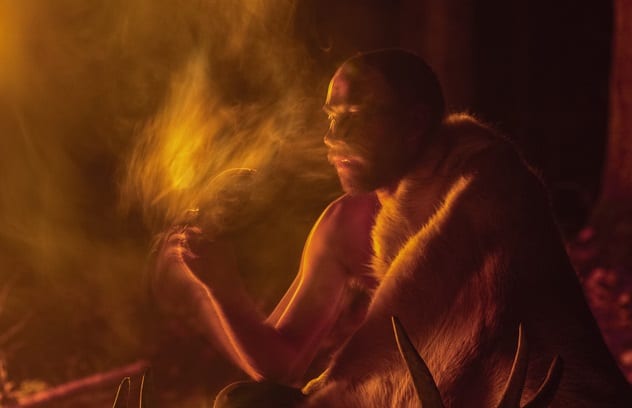
Up until the establishment of dominant and especially monotheistic religions, what we might call witchcraft today was just an accepted practice: Everybody did it, as everybody believed in the supernatural. Witchcraft has existed since the dawn of the human species. In fact, we can actually prove that witchcraft was a thing before civilization and recorded history through the examination of cave paintings, which have depicted various rites being conducted for various reasons, like a bountiful hunt. We also know that shamans were said to have special contact with the gods, the spirits, the forces of nature, you name it, and wielded considerable social power for their perceived abilities.[1]
Rock and stone art tells us what these people were like, and it’s safe to assume that, while they were highly revered, they weren’t infallible, which means that they had to produce results. If they didn’t, it’s not a far stretch to assume that, in a bloody, prehistoric world, these people would sometimes be killed.
9 Ancient Babylon
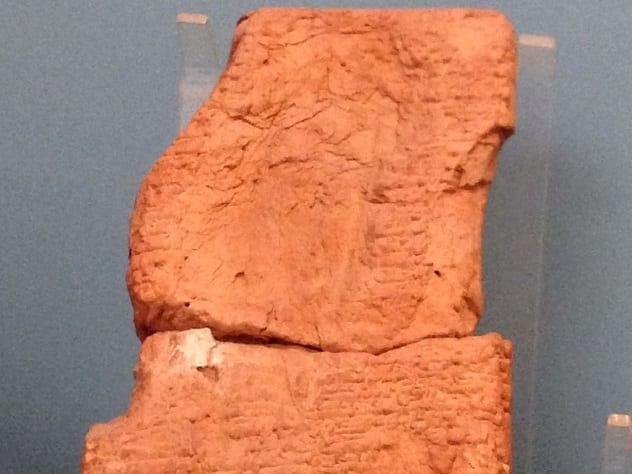
Like so much of the story of civilization, from beer to sex rituals to the beginnings of documented prostitution, the history of the witch trial begins in ancient Babylon, and we know this from the Code of Hammurabi. Etched during the reign of King Hammurabi of ancient Babylon, who ruled from approximately 1792 to 1750 BC, the code contains 282 separate laws which governed the conduct of the day.
Among them is possibly one of the earliest laws against witchcraft to ever exist, which set the stage for more laws to come later:
If anyone brings an accusation [of witchcraft] against a man, and the accused goes to the river and leaps into the river, if he sinks in the river his accuser shall take possession of his house. But if the river proves that the accused is not guilty, and he escapes unhurt, then he who had brought the accusation shall be put to death, while he who leaped into the river shall take possession of the house that had belonged to his accuser.[2]
This was not the first known instance of the trial by water, where a witch is forced to jump into or was even thrown into water to test and see if he or she survives. The ancient Sumerian Code of Ur-Nammu (pictured above) contained the same law, and these were the humble beginnings of several nightmarish things which would continue on for centuries, namely the trial by water and the witch trial.
8 Ancient Rome
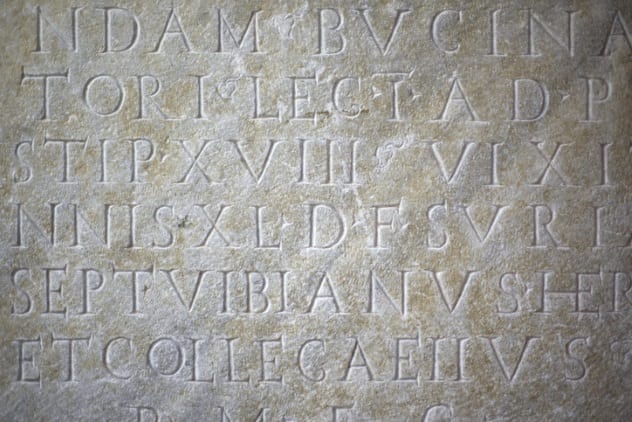
Let’s skip forward to 331 BC, in the up-and-coming world of ancient Rome, where some 170 or so women have been tried and found guilty of witchcraft, and are now about to die for the crime. Back then, Rome was superstitious and not quite the world power it would eventually become. The humble roots of medicine, mainly consisting of herbs and other plants, weren’t exactly anywhere near scientific at all, and there was a lot of guesswork and trial and error involved in their medicine.
But over 100 years before, around 450 BC, the Law of the Twelve Tables, the first known written legal system of ancient Rome, had been created. This was, of course, the beginning of the entire legal structure that would become that of the Roman Empire which grew around it. And included in the Law of the Twelve Tables, much like the Bill of Rights in the United States or the Ten Commandments in the Holy Bible, were fundamentals of conduct. And in these codes of conduct were laws against witchcraft.
These laws from over 100 years before would be used in 331, and after an unknown epidemic of deaths struck Rome suddenly, 170 women would be tried and executed for conspiring to commit a mass poisoning.[3] This is one of the first known recorded mass witch trials in history.
7 The Bacchanalia
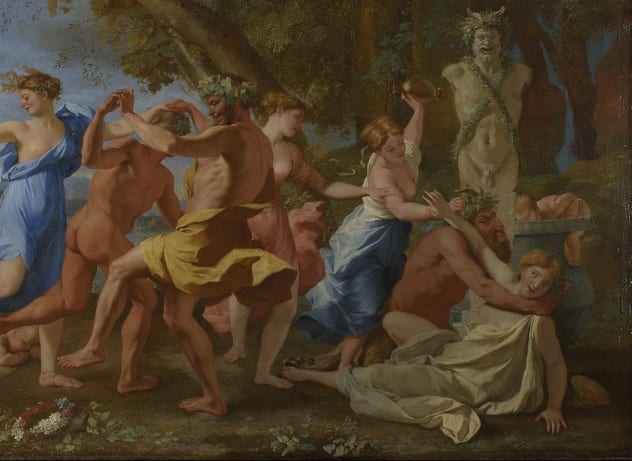
In ancient times, there were cults and broader groups of people who worshiped the god Bacchus in ancient Rome and, before him, Dionysus in ancient Greece. The two gods served to represent many things, chief among them wine, sex, debauchery, and orgiastic hedonism. Massive drunken orgies were carried out in their names from the times of ancient Greece up until the rise of the coming Roman Empire, where they were called Bacchanalia.
This was until Rome passed laws against them in 186 BC. The cults and anyone else who partook in the Bacchanalia festivals faced instant, steep, and heavy consequences: They’d be condemned for sorcery or witchcraft and executed.[4]
This seemed to be the second great known witch hunt and series of witch trials of ancient Rome, though many more probably took place, as claiming someone was a witch with powers over the supernatural was always a politically savvy way to weaken opponents. And ancient Rome was a place of political strife. The Bacchanalia was forced underground through the passage of witchcraft laws, which attempted to snuff out the cults, though they would be revived when Julius Caesar was in power.
6 The Middle Ages
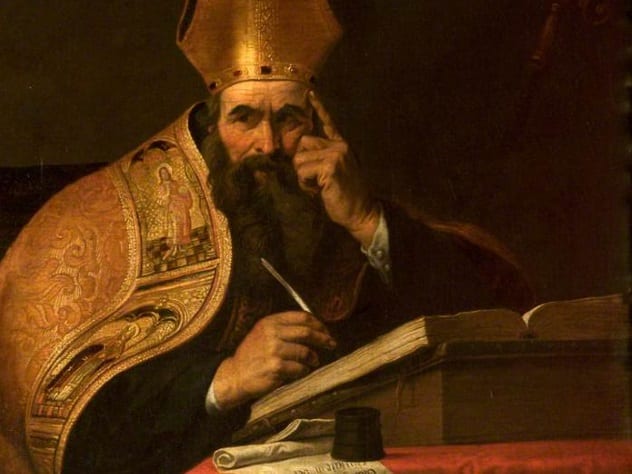
Contrary to popular belief, the people of the Middle Ages were not so extremely aggressive toward witchcraft and hardly even took the idea of witches seriously, initially.[5] St. Augustine of Hippo (depicted above), who lived in the fifth century, was a powerful and influential thinker who rose with the rising tides of Christianity, and he truly believed that anything pagan was not only ungodly but of Satan, and thus, the link between anything occultist or outside of the general framework of the Christianity of the day with evil was solidified. This idea still persists in Christianity to this day. This was a pivotal moment, as the rising Christians were soon to become the group of people who were synonymous with terrifying witch trails.
Even still, it wasn’t until the seventh through the ninth centuries that more laws against witchcraft and witches began to take root in medieval Europe. For a few centuries after St. Augustine, nobody really cared, honestly, and most people thought it was superstitious nonsense. After the laws were passed, however, people began starting to believe in magic, witchcraft, and especially sorcery, or maleficium, and practitioners of such were increasingly thought to be possessed by the Devil.
5 13th Century
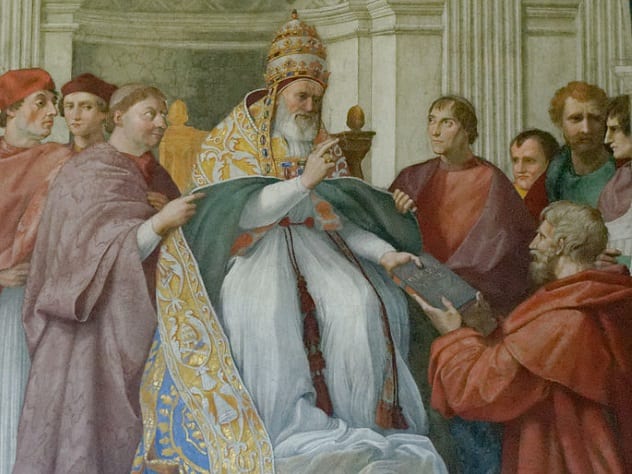
Unlucky 13. The 13th century saw a very sharp increase in superstition surrounding witches and the real beginnings of their persecution at the hands of the Church. Popes and religious figures began attacking and demonizing anyone who practiced any sort of magic or ritual outside of Christian prayer. The Roman Catholic Church began the Inquisition officially in 1184 under Pope Lucius III, and a new set of laws would be erected to combat any religious dissent throughout Europe.[6] This gave judicial power to hunt and prosecute witches. And then Pope Gregory IX (depicted above) erected the first judges in 1227, giving them power over almost everything in the name of the Inquisition.
This is when the real torture of the heretics would begin. The Inquisition would roll into the 14th century and start off with a Church political maneuver in 1307: the trial of the Knights Templar. At this point, heretics were tried here and there, but the witch trial as we know it, in all of its horrors, was still in its infancy. The Spanish Inquisition would take things up a notch and began using brutal torture methods to draw out confessions from suspected witches, but even this was just the beginning of what was to come.
4 The Early Modern Period
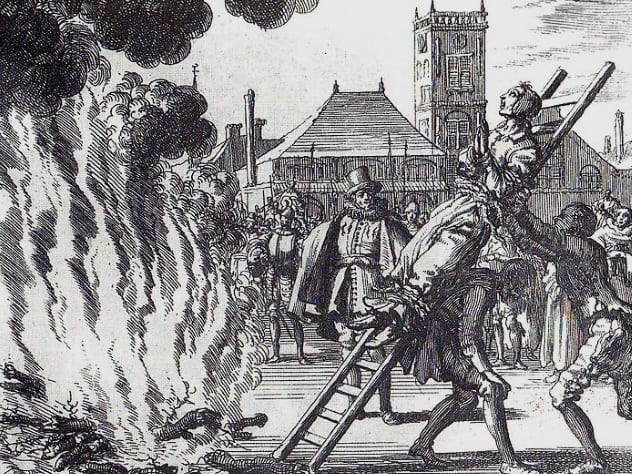
The early modern period of Europe, spanning from roughly 1450 to 1750, saw a massive increase in witch trials. During this time, around 100,000 people, mostly women, were suspected of witchcraft. Half of them were executed, typically by burning at the stake.[7] Many of these murders took place in Germany, with two particularly brutal areas being Trier and Wurzburg, and in 1589, 133 people were killed by the hands of the state, at the behest of the Church, in one single day. Germans were killing those they feared were witches ruthlessly. In 1629 alone, 279 people were executed for being witches in these areas.
The idea that any witch, no matter who they were or what they looked like, needed to be executed, spread through Europe like wildfire. Soon, every country from Scotland to Switzerland was killing people en masse. Dozens of massive witch trials took place throughout Europe as the fever of doing so set in. Tragically, thousands lost their lives for so much as being suspected of witchcraft. This spawned a new profession of witch-hunters, who looked for the supposed Devil’s Mark on people, and anyone with any sort of markings could never truly be safe. The state and Church combined, at the time, were mad with power.
3 Connecticut

Persecution mania soon spread to America, and witches were being sought out, witch-hunters employed, Devil’s Marks being supposedly found on just about anyone, and executions carried out, mainly, again, by burning at the stake. Connecticut was the first area particularly hit hard by this hysteria and bloodlust.[8] Alice Young became the first known victim in Hartford in 1647, and from there, the people of Connecticut began killing others like had happened across the Atlantic in Europe for centuries.
Several towns started mass hunts and witch trials, complete with executions and purges. Pretty much anyone could level an accusation at someone else of being a witch and, with the requirement of only needing one witness, push the state to its methods of scare tactics and torture to obtain a confession. The first recorded witchcraft confession in Connecticut came from a woman named Mary Johnson in 1648. The subsequent years saw many more brutal executions following confessions made under extreme duress.
This went on until Governor John Winthrop enacted a new law in Connecticut in 1662, stating that two, not one, witnesses were necessary to secure a conviction of witchcraft. Up until this point, people were frequently drowned in trials by water, an echo of ancient Babylon. People had been burned alive. The witch trials of Connecticut were the stuff of horror movies. Fortunately, no one suspected of being a witch was killed after 1662.
2 Massachusetts
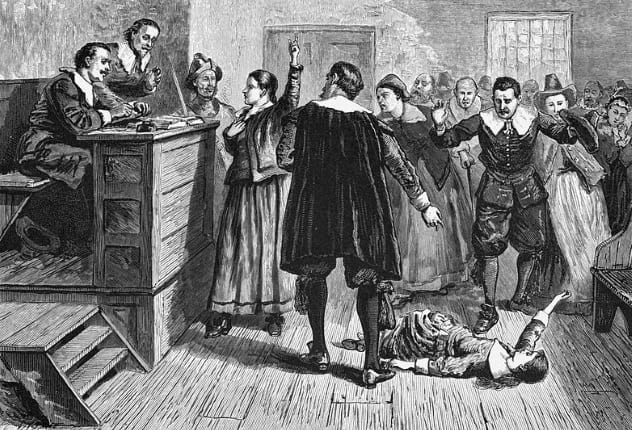
From Connecticut, witch trial fever spread to Massachusetts, culminating in what’s arguably the most famous massive witch hunt ever, the Salem witch trials.[9] In 1692, paranoia ran high, and over 200 people were accused of being witches and practicing witchcraft, conjuring the forces of nature to do ill will. Of them, 20 were executed, including small children. This will forever be a dark stain in the history of humanity. Everyone believed deeply that the Devil was trying to destroy them and their families and looked at everyone else around them with grave suspicion. Six quite young girls made accusations which started the firestorm, and the whole town believed it.
In total, between 1692 and 1693, 19 people were hanged for the crime of witchcraft, and another was tortured to death. Somewhere in between 140 and 150 people were arrested in this event of mass hysteria, and it ultimately subsided suddenly. The residents of Salem suddenly began to feel profound guilt, looking around at one another, wondering what they had done. And thus, one of the darkest chapters in human history came to a close.
1 Aftermath
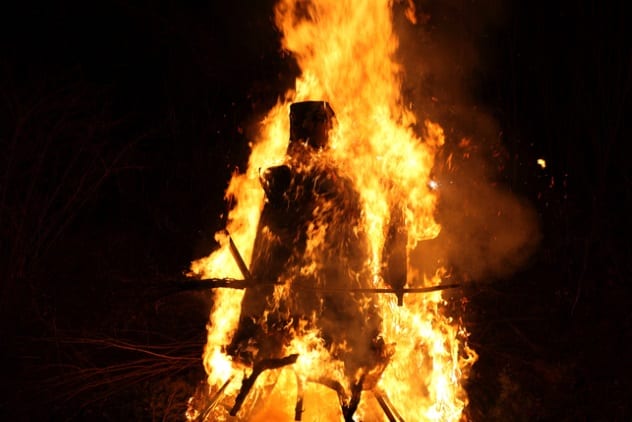
After nearly two years of fear, panic, paranoia, trials, people being placed in torture chambers, and murder, the last of the so-called witches were released, and the witch hunt fever subsided.[10] Of those six girls who started the hysteria, only one of them came forth and apologized for the lie which caused the chaos, and basically, everyone just went back to their ordinary lives as if nothing had happened. This was pretty much the end of witch hunts and subsequent trials, after thousands of years of pain and punishment in the name of superstition. But that doesn’t mean that this was the end of witch hunts altogether.
Many nations still have issues with witch hunts taking place, usually in deeply religious and superstitious areas, meaning that witch hunt fever isn’t forever done with; it only lies latent in the tendencies of the believing mind, fearful and willing to strike out at perceived threats. As recently as within the past decade, witch hunts have taken place—and gotten people killed—in places like Indonesia, Cameroon, Ghana, and more nations. There is another list on those witch hunts here, which is definitely an interesting read.
Still writing about dark stuff and history. Here’s a fun little thing about the history of the witch hunt.
Read more about witch trials from history on 10 Bizarre Stories From European Witch Trials and 10 Unusual Male Witch Trials From Europe.

